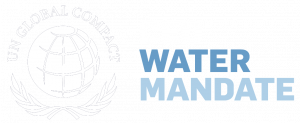Companies should screen for water-related risks and shared water challenges at each location in the sections of the value chain selected in Step 1. This will help prioritize locations for companies to set water targets that can reduce risk, contribute to eliminating a company’s impact on water resources, and ultimately reduce shared water challenges.
Gaining access to location information outside a company’s direct operations, upstream in the supply chain and downstream in consumer markets, can be very challenging. It is sometimes infeasible in the short term, hindered by limited visibility into complex supply chains and distribution networks. Because of this, companies are encouraged to consider the following before starting Step 2:
- Begin with what is known (e.g., locations of facilities within the company’s direct operations or suppliers that the company has a direct relationship with).
- Focus on what is most important to accelerate action where it matters most (e.g.,start by focusing on high-volume, high-impact, or high-expenditure items in your value chain).
- Engage with actors across the value chain to obtain missing information.
- Be pragmatic. Leverage what is known to close information gaps; for example, consider using proxy locations (e.g., mills are often in close proximity to where raw materials are grown, and subnational crop area and trade information can be used to locate sourcing areas) or third-party data (e.g., from universities or nongovernmental organizations).
- Consult and engage peer organizations, industry associations, or third-party experts to build on what has already been done and leverage existing best practice.
Companies should screen for the water-related risks that are most material to the company within the sections of the value chain identified in Step 1. Materiality is a threshold at which certain topics become relevant enough for a company to have to report on them to stakeholders, including governments, shareholders, and communities. Major disclosure services, such as the Sustainability Accounting Standards Board and the Task Force on Climate-related Financial Disclosures, anchor their disclosure recommendations in materiality.
Water-related risk can originate from company dependencies on water resources (driven by the likelihood of shared water challenges undermining business viability) or impacts on water resources (driven by the likelihood of company activities contributing to shared water challenges).
Because of this, to determine if water-related risks have reached a material threshold and should be prioritized for setting targets, a company must first determine:
- Which shared water challenges threaten a company’s access to needed water resources most? For example, a bottling company may identify both water availability and water quality as important shared water challenges because both are critical for providing its product to consumers.
- Which shared water challenges are driven by a company’s impact on water resources? For example, a crop producer using groundwater for irrigation may identify groundwater depletion as the most pressing shared water challenge to which the company contributes.
Companies can then determine which of its locations should be prioritized for setting water targets. Existing open-source tools can help by mapping sourcing regions, suppliers, manufacturing facilities, and markets against globally comparable information on shared water challenges (Table 4).

Publicly available global tools for screening shared water challenges across large areas have significant limitations (Hofste et al. 2019). They may not provide the spatial, temporal, and thematic accuracy and granularity needed to understand shared water challenges. So companies may have to conduct some internal validation before confirming the high-priority shared water challenges at each location. Companies should also identify locations that face shared water challenges but have not been identified by the screening tool, as well as locations where global data does not point to such challenges but where the company relies on important value chains or catchment areas.
Identifying the right issues, in the right places, may require an iterative process. For example, in consulting with each of its business units, a company may discover specific shared water challenges that affect certain sites but were not originally apparent.
Companies with very large portfolios of locations may benefit from establishing criteria to help categorize and group locations on the basis of their business relevance and exposure to water-related risks. This process can help distinguish between sites and set water targets of varying ambition and scope across locations (Table 5). For example, a more ambitious target may be warranted for locations that face multiple shared water challenges or that are significant for revenue generation.

Because the degree of categorization can vary from very simple to extremely complex, each company should decide how best to categorize its locations on the basis of its industry, portfolio footprint, and geographic distribution. However, it is important to establish criteria that relate to the catchment’s shared water challenges and the company’s dependencies and impacts on water resources.
